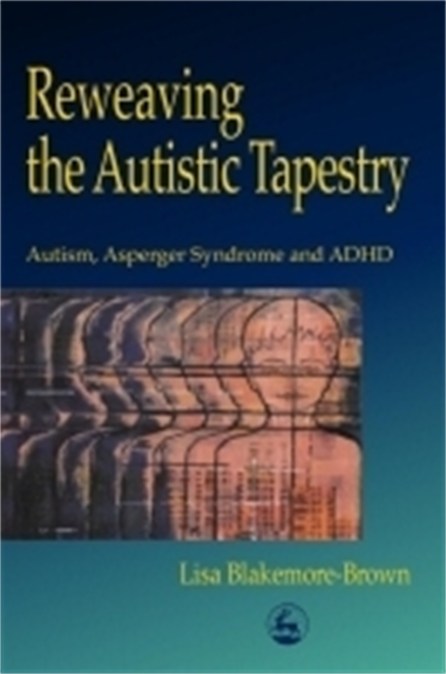Reweaving the Autistic Tapestry
On sale
1st October 2001
Price: £22.99
Although there is increasing professional recognition of the links between ADHD and autistic spectrum disorders, this is the first book to analyse them in depth. In Reweaving the Autistic Tapestry, Lisa Blakemore-Brown uses the metaphor of the ‘tapestry’ to explain more clearly to parents and professionals the interwoven nature of these disorders. She demonstrates how by focusing on defined threads of the individual’s tapestry, such as communication ability or hyperactivity, within the larger picture, we can better assess the individual’s needs and make more effective interventions. She argues that the more traditional approach, which aims to ameliorate specific problems rather than working within the bigger picture, can actually prove counter-effective. In a comprehensive chapter on interventions, the author discusses different approaches, emphasising the importance of early intervention and of finding the right approach for the individual child. Case studies are described alongside drawn tapestries to show how this simple visual method can easily be used to illustrate the history, current status and ongoing progress of a child. In this way, the tapestry can be used as a construct to define rich and unique personal landscapes.
Useful for parents as well as professionals, this groundbreaking book demonstrates how a deeper understanding of the complexity of human development can lead to more appropriate early intervention and treatment plans for children who manifest complex symptoms, thus helping them to lead happier and more fulfilling lives.
Useful for parents as well as professionals, this groundbreaking book demonstrates how a deeper understanding of the complexity of human development can lead to more appropriate early intervention and treatment plans for children who manifest complex symptoms, thus helping them to lead happier and more fulfilling lives.
Newsletter Signup
By clicking ‘Sign Up,’ I acknowledge that I have read and agree to Hachette Book Group’s Privacy Policy and Terms of Use
Reviews
The notion that a child may have several disorders running alongside one another has been powerfully explained by a British child psychologist, Lisa Blakemore-Brown. She used the metaphor of a tapestry to illustrate that a child may present with various threads of difficulty; for example, ADD combined with Aspergers, or ADHD with a language impairment. Those threads may appear to be the same as those in another child but each individual will have his own unique weave of problems. The key to helping a child is discovering what threads are there and how they are interwoven. I believe that Lisa Blakemore-Brown's book, Reweaving the Autistic Tapestry, should be required reading in every LEA - and in the Department of Health. It is very persuasive.
Lisa Blakemore-Brown has written a helpful and detailed book about children in the autism, aspergers, and attention deficit hyperactivity spectrum of developmental disorders. Her overarching metaphor of the tapestry warp and weft, interbalancing and patterning speaks to the complexity of the child within the autistic spectrum of disorders. Helping to make sense of such a complex pattern may enable parents and treating professionals to emerge from what seems like a tangled spider's web of contradictions.
This book compares (in Blakemore-Brown's own terms, 'interweaves') the two spectrum disorders, autism and attention deficit and hyperactivity disorder.The sections on causes and on definition and description are very useful, and make interesting reading. They include the most up to-to-date research information that I have seen published, and an intelligent discussion on the material.
Weaving and tapestry are attractive metaphors that can help us to imagine the vast numbers of variables involved in the complex and pervasive manifestations of what we call autism and to understanding the concept of a spectrum of related disorders. The idea of individual and unique tapestries for each person is valuable, in helping us to ponder the possible effects of planned interventions in the fabric of a person's life. The metaphor of reweaving a tangled tapestry can help us envision how to plan and carry through the interventions. It may help us guard against the dangers of over-simplifying the difficulties in expecting that a single intervention will fix all.

